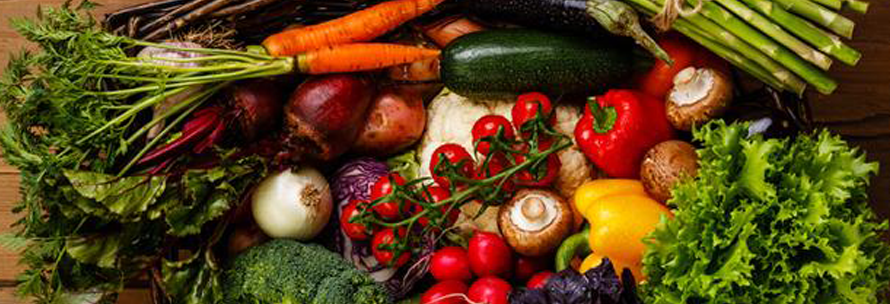Growing Your Own Vegetables: A Guide

Growing your own vegetables from seeds is an economical and rewarding way of eating healthily, avoiding pesticides, and protecting the environment.
How to start growing your vegetable seeds:
In a greenhouse or conservatory, or indoors on a windowsill
You can sow the seeds indoors then pot and plant them outside when there is no danger of a sharp frost.
Plant them directly into the ground
This is a quick and easy way to encourage a nice healthy crop of vegetables to grow in your garden.
Where to grow your seeds
You don’t need a huge garden to grow your own vegetables, you just need an open, sunny spot.
You can either have a patch specifically for vegetables, or you can grow them in a bed or pot alongside flowers. Even an outdoor window box or a tray on your windowsill will suffice for growing herbs and tomatoes.
If you don’t have a lot of space, use large pots and containers. You can grow tomatoes in hanging baskets and you can even grow pumpkins in pots; get creative! Look out for old wheelbarrows, buckets, or even sinks, which all make unusual but effective planters!
Raised beds are a good alternative to growing seeds in the soil, because you can position the bed in the best place for optimal growth.
What should you grow?
However you want to grow your vegetables, there are some vegetables that are quick and easy to grow, so try these if you are just starting off:
- Tomatoes
- Peppers
- Beans
- Peas
- Salads
- Carrots
- Beetroot
Starting your vegetable seeds off
There are a few easy ways to start growing your seeds:
Growing packet vegetable seeds
Fill a seed tray or another appropriate container with compost. Leave a 1cm gap at the top. Scatter the seeds evenly and press them into the compost gently. If the seeds are fairly large, cover them with a little compost. Water the seeds and keep them in a warm spot indoors, away from any draughts. If you are growing salad leaves, beetroot, carrots, or parsnips, you can sow the seeds where you want them to grow.
Seed mats
This is an easy way to grow seeds indoors. Fill a suitable container with compost and leave a 2cm gap at the top. Lay the seed mat on the compost and lightly cover it with some compost. Water the seed mat and keep it in a warm spot, away from any draught.
Seed tapes
This is another super easy way to grow your vegetables. Use a stick or the handle of a tool to make a groove in the soil in your garden. Lay the tape along the groove and cover it with soil, then water the ground.
Let your seeds grow and develop
When the seedlings are large enough, move them into larger pots or trays of compost so that they can grow more easily.
Hold the top leaves carefully and lift the seedlings out of their original container. Make small holes to plant the seedlings in, and take care not to damage the roots. Press the compost around the roots and stems, then water them gently. Keep them in a warm spot indoors, but out of direct sunlight for up to 4 days.
Sowing your seeds outdoors
March until May is the perfect time to sow seeds for most vegetables.
Pick out any weeds and rake the soil until it’s soft and crumbly.
If you dig some compost into the soil before you sow the seeds, you will get a better crop when your vegetables grow.
Seed sowing methods
Broadcast method
Scatter the seeds on the surface of the soil in a circular pattern. They can then be raked into the surface of the soil or covered with compost and gently pushed down.
Start growing vegetables in rows
This method is good for sowing fine seeds, like carrot seeds. with. Sow the seeds thinly, after you have created a shallow groove in the soil.
Crop rotation
It’s a good idea to move each section of vegetables you grow every year, as this reduces the likelihood of them getting spoiled by pests or diseases, and it maintains the fertility of the soil.
Helpful vegetable growing tips
- Soak beans overnight and place them on damp cotton wool. This will speed up germination.
- Seed trays don’t cost much, but you can even grow your seeds in a margarine tub or similar. Just make sure you add some holes for drainage.
- Lolly sticks make cheap and effective seed labels.
- Store any spare seeds in a sealed container with some grains of rice. This will keep them dry.
- Protect your pots and planters from slugs by wrapping some copper tape around it. They don’t cross it.
- Planting marigolds among your tomato plants will deter whitefly.
- Cover seedlings and young plants with polythene if there’s bad weather or a sharp frost.
If you are interested in even more helpful tips and interesting articles. Check out our blog.








